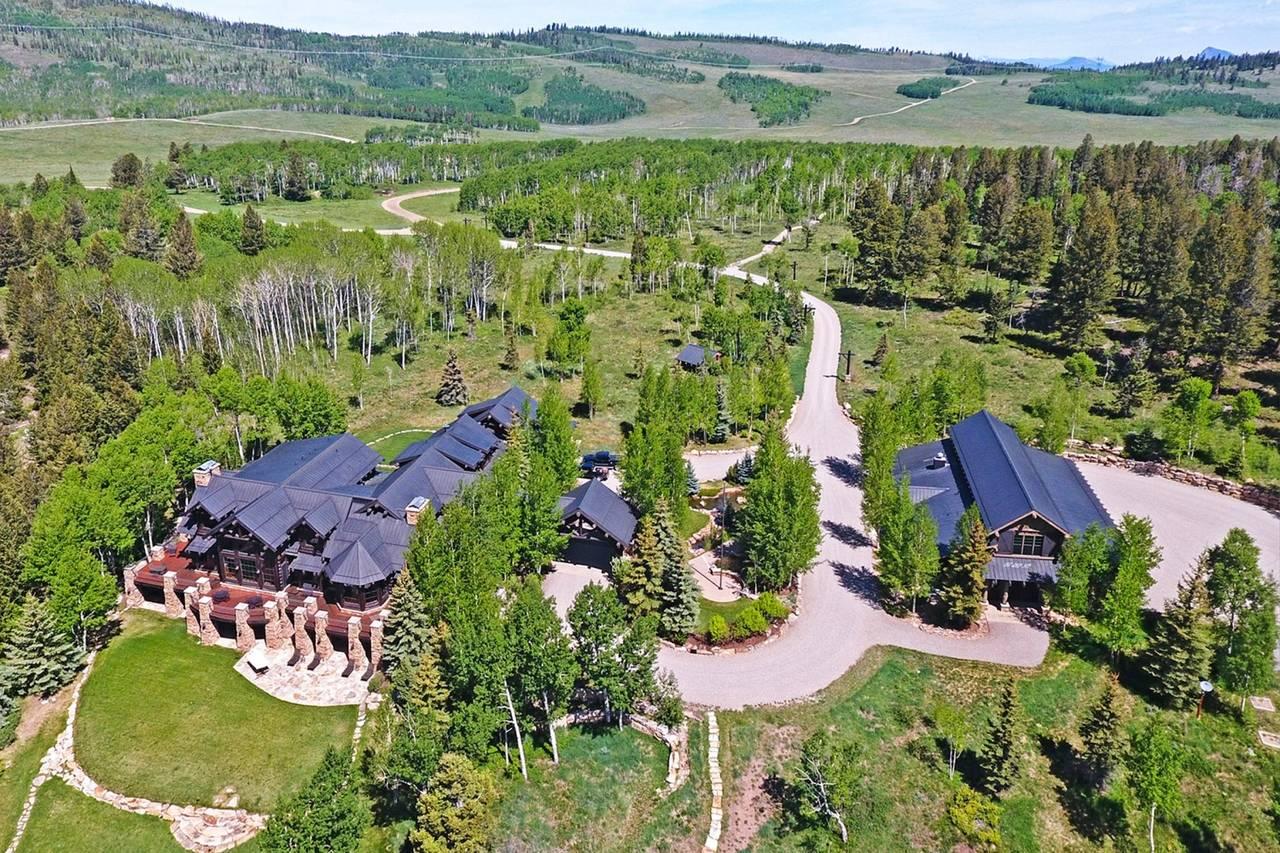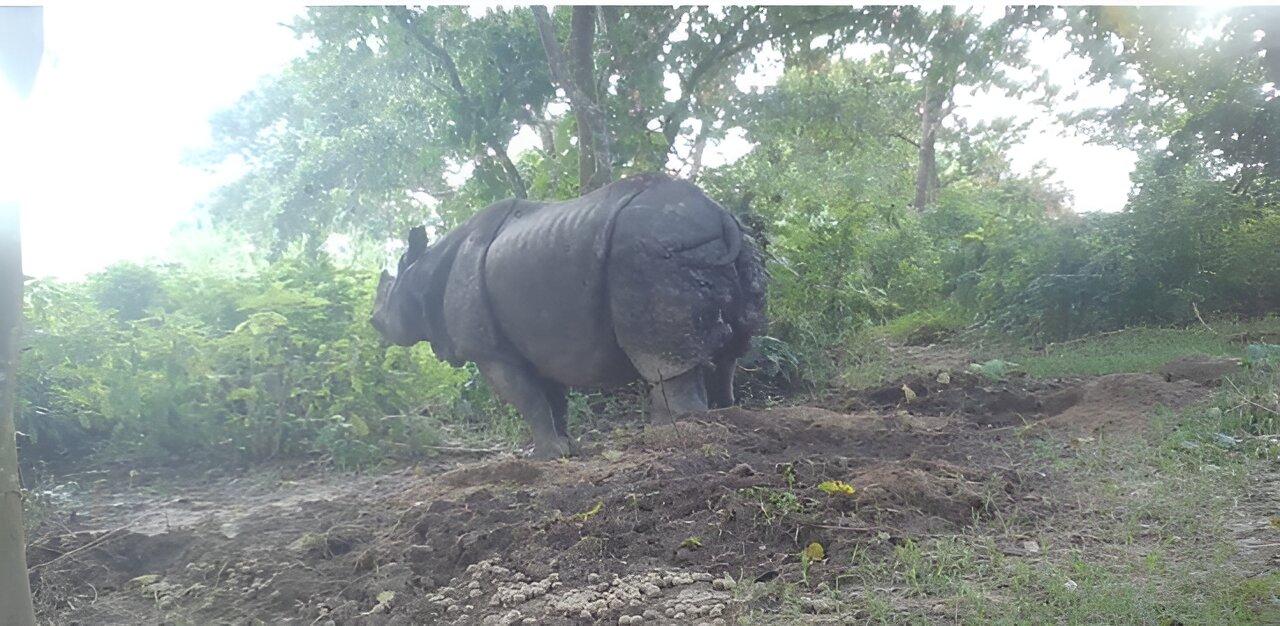In a outstanding flip of occasions, the African panorama has borne witness to an important conservation good fortune tale as rhinoceroses, which vanished from Uganda 4 many years in the past, discover a new house at a non-public ranch. As soon as deemed extinct within the area, the resurgence of those majestic creatures underscores the potential of flora and fauna restoration thru devoted efforts and cutting edge methods.This newsletter explores the adventure from extinction to revival, highlighting the position of a visionary non-public ranch that has develop into a sanctuary for almost 50 rhinos, providing hope for the way forward for those endangered species. Via a mix of group engagement and conservation practices, this initiative no longer handiest breathes existence again into Uganda’s flora and fauna heritage but additionally serves as a compelling instance for world conservation efforts.
The Adventure of Rhino Conservation in Uganda
From the threshold of extinction to thriving populations, the resurgence of rhinoceroses in Uganda tells a compelling tale of willpower and conservation. Within the Seventies, rampant poaching and habitat loss resulted in the devastating decline of those majestic creatures, ensuing of their disappearance from the ugandan panorama. Then again, a concerted effort through conservationists, govt entities, and personal ranch house owners has carved a brand new trail for the rhinoceros inhabitants. A pivotal technique concerned the established order of safe spaces and personal sanctuaries the place rhinos may just thrive safely, clear of the threats of poaching.
The good fortune of rhinoceros conservation in Uganda will also be attributed to a number of key components:
- Neighborhood Involvement: Native communities were engaged in conservation efforts, which has fostered a way of possession and duty in opposition to flora and fauna.
- Schooling and Consciousness: Techniques geared toward teaching the general public concerning the significance of rhinos have significantly lowered poaching charges.
- Supportive Law: More potent rules and higher consequences for poaching have deterred unlawful actions.
- Breeding Techniques: A hit breeding tasks on non-public ranches have higher the rhino inhabitants, with just about 50 people calling Uganda house as soon as once more.
| Yr | Tournament |
|---|---|
| 1983 | Ultimate recorded sighting of a wild rhino in Uganda |
| 2005 | First rhinos reintroduced from Kenya to Uganda |
| 2023 | Inhabitants reaches just about 50 people on non-public ranches |
Reviving Misplaced Populations: The Function of Personal Ranches

Personal ranches have emerged as a very powerful avid gamers within the conservation enviornment,in particular for species prior to now believed misplaced to extinction in positive areas. The revival of the rhino inhabitants in Uganda exemplifies how strategic efforts on non-public land can yield tangible effects. Via offering a safe habitat that mimics the animals’ herbal setting, those ranches facilitate breeding methods, be offering coverage from poaching, and create environments the place rhinos can thrive. Essential facets of this initiative come with:
- Habitat Recovery: Personal ranches ceaselessly put money into restoring local crops and ecosystems, which can be crucial for the survival of reintroduced species.
- Neighborhood Involvement: Many ranches foster partnerships with native communities, serving to them perceive the price of flora and fauna conservation in selling each biodiversity and sustainable livelihoods.
- Analysis and Tracking: Endured analysis on animal habits and well being lets in for adaptive control practices that make stronger total inhabitants good fortune.
The good fortune of personal ranches in rejuvenating misplaced populations isn’t simply a question of reintroduction; it comes to systematic control and cooperation throughout more than one fronts. For example,data-driven approaches assist information breeding selections and track genetic range.A contemporary file highlighted the development made, showcasing key statistics at the rhino inhabitants restoration:
| Yr | Collection of Rhinos | Breeding Pairs |
|---|---|---|
| 2010 | 5 | 1 |
| 2015 | 20 | 5 |
| 2023 | 50 | 10 |
Those numbers mirror no longer handiest the tenacity of nature but additionally the willpower of personal sector involvement in flora and fauna conservation, heralding a brand new bankruptcy in restoring biodiversity in spaces the place it as soon as waned.
Demanding situations of Rhino Reintroduction and Habitat Recovery

The reintroduction of rhinoceroses into their former habitats is fraught with a large number of demanding situations that may jeopardize each the animals and the ecosystems they’re being returned to. One vital hurdle is habitat suitability. After many years of absence,ecosystems can have passed through vital adjustments,making it difficult for rhinos to thrive in environments that would possibly now be ruled through invasive species or altered through human encroachment. Moreover, the fragmentation of habitat because of agricultural growth and concrete building limits the migratory pathways which can be a very powerful for the genetic range of rhinoceros populations. Addressing those problems calls for complete checks to be sure that the brand new habitats can fortify those majestic animals.
Every other really extensive problem lies in human-wildlife conflict, which ceaselessly arises when newly reintroduced animals challenge into human settlements on the lookout for meals or water. Instructing native communities at the significance of conservation and some great benefits of rhinos to the ecosystem is very important to mitigate conflicts. additionally, poaching stays a chronic risk, pushed through call for for rhino horns. Efficient anti-poaching measures and the established order of safe safe spaces are important to safeguarding those animals. Collaborations with native governments, conservation teams, and communities are important to create long-term methods that advertise each the protection of the rhinoceros and the financial well-being of the folk residing in shut proximity to those magnificent creatures.
| Demanding situations | Answers |
|---|---|
| Habitat Suitability | Behavior ecological checks sooner than reintroduction |
| Fragmentation of Habitat | Put into effect flora and fauna corridors |
| Human-Natural world Struggle | Neighborhood schooling and engagement |
| Poaching threats | Improve anti-poaching tasks |

Neighborhood involvement has develop into a cornerstone within the revival and conservation of flora and fauna, in particular in efforts to revive populations of species as soon as concept misplaced. In Uganda, the reintroduction of rhinos isn’t just a triumph of conservation but additionally a testomony to the ability of native engagement. More than a few native organizations and ranches have partnered with the group to create consciousness and supply schooling concerning the significance of biodiversity and habitats.Those tasks have resulted in:
- Consciousness Campaigns: Informative classes that teach locals concerning the rhinos and their ecological importance.
- Process advent: Employment alternatives for group individuals in spaces reminiscent of eco-tourism and flora and fauna control.
- Volunteer Techniques: Alternatives for people to actively take part in flora and fauna tracking and habitat recovery.
Via those collaborative efforts, communities have advanced a vested pastime within the well being and enlargement of the rhino inhabitants. Engagement on the grassroots degree has opened avenues for sustainable practices that receive advantages each flora and fauna and other people. The results of such involvement will also be illustrated within the following desk:
| Neighborhood Initiative | Affect on Conservation |
|---|---|
| Neighborhood Schooling Workshops | Higher wisdom resulting in protecting behaviors. |
| Native Employment Alternatives | Inspired native stewardship of conservation spaces. |
| Natural world Tracking Techniques | Enhanced records assortment and species coverage efforts. |
Having a look Forward: methods for Sustainable Rhino Populations

To verify the thriving long term of rhino populations, complete methods should be followed that surround habitat recovery, group engagement, and stringent anti-poaching measures. Recovery of herbal habitats is a very powerful, as this offers the vital setting for rhinos to thrive.This will also be accomplished thru:
- Reforestation and planting of indigenous flowers to revive ecosystems
- setting up flora and fauna corridors that attach fragmented habitats
- Enforcing land control practices that prioritize sustainable grazing
Enticing native communities is similarly important in fostering coexistence between people and rhinos. Neighborhood-based methods can empower citizens thru schooling and financial incentives related to conservation efforts. Tasks must come with:
- Coaching locals as flora and fauna displays to deter poaching
- Creating eco-tourism ventures that financially receive advantages the group
- Organising a gadget of rewards for shielding flora and fauna
Additionally, it is very important to put money into analysis and tracking techniques to evaluate the well being of rhino populations and their habitats. Leading edge era, reminiscent of GPS collaring, can help in monitoring actions and amassing important records. Participating with conservation organizations may end up in the improvement of focused insurance policies that no longer handiest give protection to rhinos but additionally fortify biodiversity as an entire.
Classes Realized from Uganda’s Rhino Restoration Initiative

Uganda’s adventure to revive its rhino inhabitants supplies a very powerful insights into efficient conservation methods.The initiative, pushed through a partnership between govt entities and personal ranchers, highlights a number of key courses, together with the significance of group engagement, rigorous anti-poaching measures, and sustainable habitat control. A hit recovery calls for no longer simply the reintroduction of species but additionally the dedication of native communities, who see the tangible advantages of flora and fauna preservation thru eco-tourism and activity advent. Via involving those communities, the initiative fosters a way of possession and duty in opposition to flora and fauna conservation.
Additionally, this system emphasizes the importance of long-term planning and funding in flora and fauna coverage. A structured means that incorporates common tracking of rhino populations and adapting methods in line with ecological records has confirmed important for good fortune. The initiative has applied strict anti-poaching rules and enforcement, supported through schooling campaigns that lift consciousness concerning the ecological and financial price of rhinos. Collaborations with world conservation organizations have additionally equipped crucial investment and experience, showcasing that efficient conservation is ceaselessly an international effort.
| Key Classes | Description |
|---|---|
| Neighborhood Engagement | Involving native populations in conservation efforts creates funding and extra coverage. |
| Anti-Poaching enforcement | Strict rules and group consciousness campaigns scale back poaching dangers. |
| Sustainable practices | Lengthy-term making plans guarantees habitats stay viable for rhino populations. |
| World Collaboration | Partnerships with world organizations bolster sources and experience. |
In Abstract
As Uganda displays at the adventure from the extinction of its local rhino inhabitants to the resurgence witnessed on a non-public ranch, the tale serves as an impressive testomony to conservation efforts and the affect of human intervention. Just about 4 many years after the final wild rhinos vanished from the rustic, the a hit breeding and reintroduction program indicates hope no longer just for Uganda’s flora and fauna but additionally for world conservation tasks going through equivalent demanding situations. This outstanding turnaround underscores the significance of collaboration between non-public and public sectors in protecting biodiversity. As those majestic creatures roam the plains all over again, they no longer handiest characterize resilience but additionally spark renewed pastime in protective herbal habitats and fostering ecological stability. Having a look forward, the continuing fortify of conservation methods and public consciousness will probably be a very powerful in making sure that Uganda’s rhinos—as soon as misplaced—don’t face the specter of extinction once more. The adventure is a ways from over, however with concerted efforts and group involvement, the long run for Uganda’s rhinos seems brighter than ever.
Source link : https://afric.news/2025/04/02/rhinos-went-extinct-in-uganda-40-years-ago-now-a-private-ranch-is-home-to-almost-50-cnn/
Writer : Noah Rodriguez
Put up date : 2025-04-02 21:51:00
Copyright for syndicated content material belongs to the related Source.



